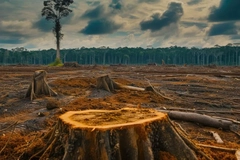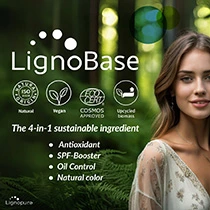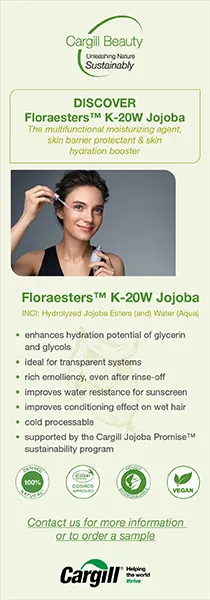Study discovers agricultural waste provides anti-aging and UV-protection

A study has found that agricultural byproducts may have UV-protecting, anti-inflammatory, and anti-aging properties. By using a 3D human skin model, the scientists highlight the use of agricultural waste for sustainable skin care applications that promote skin health.
The food byproducts tested were red onion, chicory leaves, olives, and vineyard pruning. All polyphenolic extracts significantly reduced UV-induced sunburn and showed protective effects against UV damage to the skin.
The researchers note that polyphenolic extracts are known for their anti-aging, anti-inflammatory, and antioxidant properties and are emerging as promising agents for skin care applications.
The vineyard pruning and red onion extracts enhanced collagen production. The scientists suggest that the two extracts counteract sun-damaged skin degradation and are an anti-aging solution. Meanwhile, the vineyard pruning also showed anti-inflammatory properties on the model.
Reducing sunburnt cells
The study, published in the Journal of Agriculture and Food Research, used a human skin equivalent — a 3D full-thickness skin culture model containing epidermal and dermal cell layers. Using a 3D rather than a 2D model provides a better recapitulation of the skin’s complex architecture and cellular interactions in “real human skin,” says the study.
One of the study’s main findings was that sun-damaged tissues treated with any of the four extracts showed a reduction in the number of sunburnt cells, indicating photoprotective properties.
 The study stresses how these byproducts are offering promising opportunities for sustainable development. The extracts were produced from the agricultural sources using a subcritical water extraction (SWE) technique. This green extraction model uses minimal chemicals and no harmful solvents, making it eco-friendly for a sustainable approach.
The study stresses how these byproducts are offering promising opportunities for sustainable development. The extracts were produced from the agricultural sources using a subcritical water extraction (SWE) technique. This green extraction model uses minimal chemicals and no harmful solvents, making it eco-friendly for a sustainable approach.
“These methods not only diminish the need for harmful solvents and reduce energy demands but also elevate the commercial potential of agricultural waste. Unlike conventional techniques, SWE utilizes pressurized hot water to extract target compounds, bypassing toxic solvents and significantly reducing ecological footprint,” reads the study.
“By fine-tuning temperature and pressure, water’s polarity can be tailored to enhance selectivity, yielding high-purity extracts with minimal energy expenditure.”
Momentum for agricultural waste
The study stresses how agricultural byproducts remain an underutilized reservoir of high-value bioactive compounds, offering promising opportunities for sustainable skin care development.
The scientists point out that the valorization of agricultural waste has gained momentum recently due to its benefits. It mitigates environmental harm through waste reduction and circular economy practices and enables applications in other sectors.
Äio recently received a grant from the Estonian government to speed up production of its yeast-derived sustainable fat alternative for cosmetic formulations. The company turns agricultural byproducts, such as wood, into fats and oils through yeast fermentation.
Earlier this month, Personal Care Insights reported on a study highlighting the potential for essential oil waste to be used for sustainable skin care applications. The oils are ri Sun-damaged tissues treated with any of the four extracts showed a reduction in the number of sunburnt cells.ch in bioactive compounds such as flavonoids, phenols, vital nutrients, and polysaccharides, and are suitable for cosmetics targeting anti-aging, hydrating, antimicrobial, and skin-protecting properties.
Sun-damaged tissues treated with any of the four extracts showed a reduction in the number of sunburnt cells.ch in bioactive compounds such as flavonoids, phenols, vital nutrients, and polysaccharides, and are suitable for cosmetics targeting anti-aging, hydrating, antimicrobial, and skin-protecting properties.
Other recent studies have found that starch has multifunctional potential cosmetic applications due to its absorbency, smooth texture, and ease of application. It may enhance cosmetic formulations suitable for skin care, body care, makeup, and hair care. Starch can also be used for gel, paste-based products, or packaging solutions.
Meanwhile, cork residues have also been reported for their potential in makeup, color cosmetics, and exfoliators. Due to its recyclable and biodegradable properties, the byproduct of cork processing presents a possible solution to creating more environmentally sustainable cosmetics.












